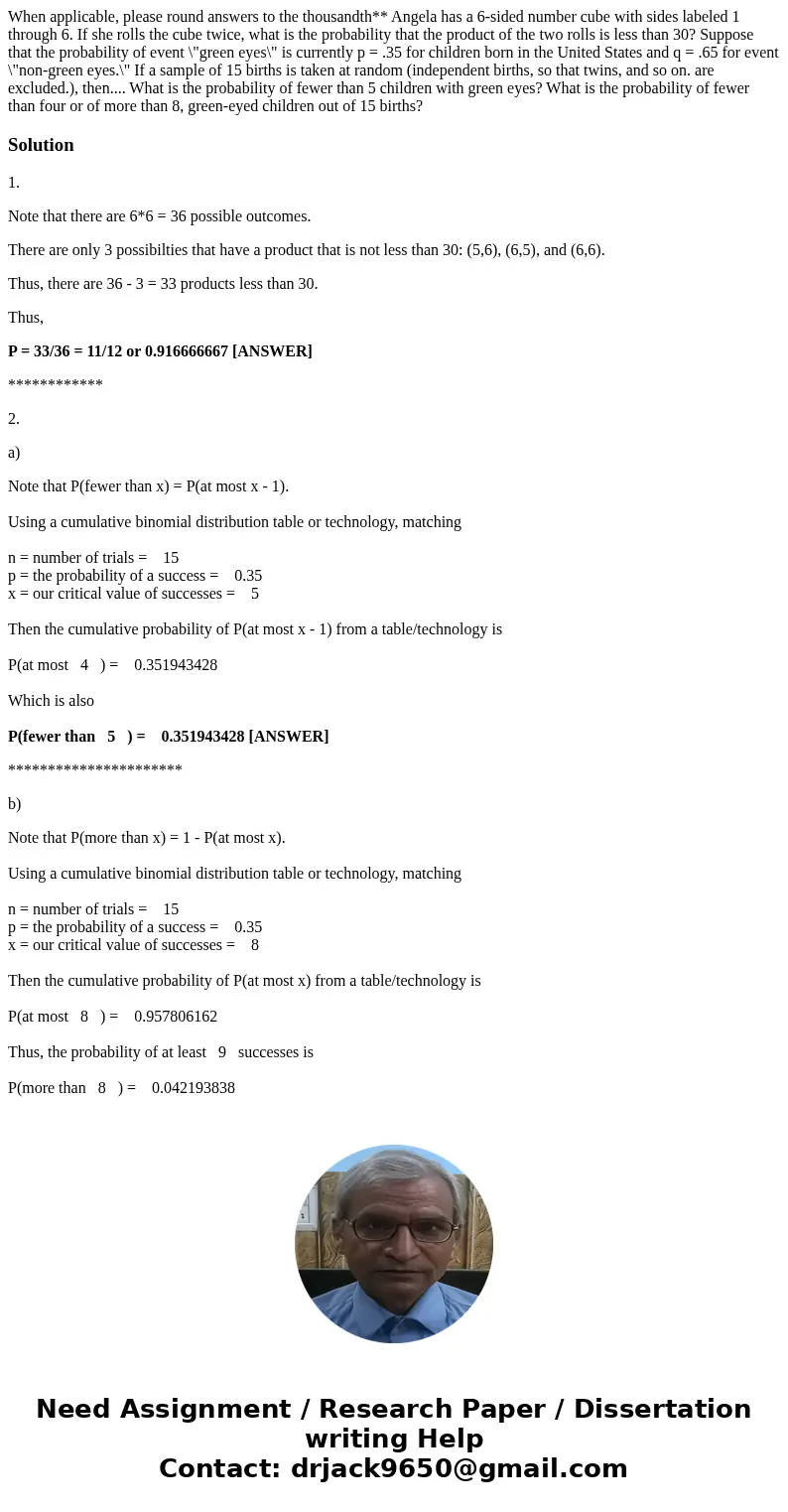When applicable please round answers to the thousandth Angel
Solution
1.
Note that there are 6*6 = 36 possible outcomes.
There are only 3 possibilties that have a product that is not less than 30: (5,6), (6,5), and (6,6).
Thus, there are 36 - 3 = 33 products less than 30.
Thus,
P = 33/36 = 11/12 or 0.916666667 [ANSWER]
************
2.
a)
Note that P(fewer than x) = P(at most x - 1).
Using a cumulative binomial distribution table or technology, matching
n = number of trials = 15
p = the probability of a success = 0.35
x = our critical value of successes = 5
Then the cumulative probability of P(at most x - 1) from a table/technology is
P(at most 4 ) = 0.351943428
Which is also
P(fewer than 5 ) = 0.351943428 [ANSWER]
**********************
b)
Note that P(more than x) = 1 - P(at most x).
Using a cumulative binomial distribution table or technology, matching
n = number of trials = 15
p = the probability of a success = 0.35
x = our critical value of successes = 8
Then the cumulative probability of P(at most x) from a table/technology is
P(at most 8 ) = 0.957806162
Thus, the probability of at least 9 successes is
P(more than 8 ) = 0.042193838
Note that P(fewer than x) = P(at most x - 1).
Using a cumulative binomial distribution table or technology, matching
n = number of trials = 15
p = the probability of a success = 0.35
x = our critical value of successes = 4
Then the cumulative probability of P(at most x - 1) from a table/technology is
P(at most 3 ) = 0.172696487
Which is also
P(fewer than 4 ) = 0.172696487
Thus,
P(more than 4 or more than 8) = 0.042193838 + 0.172696487 = 0.214890325 [ANSWER]


 Homework Sourse
Homework Sourse